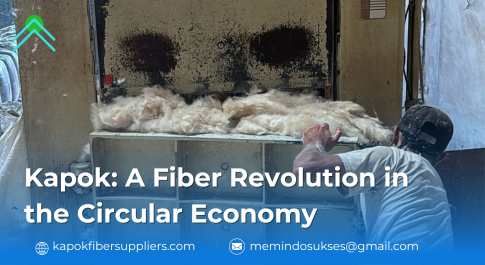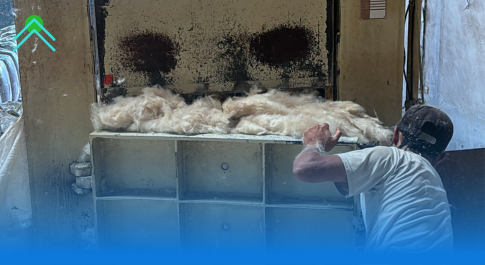
Kapok: A Fiber Revolution in the Circular Economy
Sustainability is more than reducing waste and conserving resources. A circular economy keeps materials in use for as long as possible, maximizing their value before regenerating them. Kapok, a natural fiber from the Ceiba pentandra tree, is a perfect example of this model.
Why Kapok Fits the Circular Economy
Kapok supports a circular economy by being biodegradable, regenerative, and energy-efficient.
Fully Biodegradable Kapok decomposes naturally without polluting the environment. Unlike synthetic fibers, which take centuries to break down, kapok products return to the earth after use. This makes them ideal for eco-friendly bedding, insulation, and packaging.
Regenerative Agriculture Kapok trees thrive in tropical climates with little need for fertilizers or pesticides. Unlike cotton, which depletes soil nutrients, kapok trees improve biodiversity and prevent soil erosion. Their deep roots retain moisture, benefiting surrounding plant life.
Low-Impact Production Kapok processing requires little energy. It can be used as stuffing or insulation, and once worn out, it can be composted. This creates a closed-loop system where products don’t become waste but return to nature.
Versatile Uses of Kapok
Kapok is lightweight, insulating, and hypoallergenic. It has many practical applications in a sustainable economy.
Eco-Friendly Packaging Kapok can replace plastic-based packing peanuts and foam. It is biodegradable and compostable, reducing packaging waste.
Sustainable Fashion Kapok is emerging as a fiber for clothing and accessories. Designers use it to create biodegradable jackets, shoes, and bags. Unlike synthetic materials, kapok textiles break down naturally at the end of their life cycle.
Green Building Insulation Kapok is an excellent insulator. It can replace synthetic materials like fiberglass in homes and offices. After use, kapok insulation can be composted instead of ending up in landfills.
Sustainable Bedding and Upholstery Kapok-filled pillows, mattresses, and furniture provide comfort without harming the planet. These products can be refilled or repurposed instead of being discarded.
How Kapok Supports Circular Design
Kapok aligns with the principles of reducing, reusing, recycling, and regenerating.
Reduce: Kapok trees need fewer resources than cotton. They grow in mixed forests, preventing the need for harmful monoculture farming.
Reuse: Kapok products are durable. They can be refilled or repurposed, extending their lifespan and reducing waste.
Recycle: At the end of their use, kapok products can be composted, enriching the soil instead of filling landfills.
Regenerate: Kapok trees restore ecosystems. They prevent erosion, conserve water, and provide habitat for wildlife. When farmed responsibly, they contribute to a healthy planet.
Kapok’s Role in a Greener Economy
The world is shifting away from the “take-make-dispose” model. Kapok helps by reducing waste, supporting small farmers, and promoting sustainable industries. As demand grows, it will become a key material in eco-friendly production.
Conclusion: Kapok’s Future in Sustainability
Kapok is more than just a fiber; it is a step toward a circular economy. Its lightweight nature, biodegradability, and versatility make it an ideal material for sustainable industries. By choosing kapok, we support a future where products work with nature, not against it.
Though small, kapok has the power to transform industries and protect the environment. The circular economy is growing, and kapok is ready to lead the way.
Contact us :
☎️ : +6285933133244
📍 : Jl.Ir Soekarno, No.122, Dadaprejo, Junrejo, Kota Batu, East Java 65323

